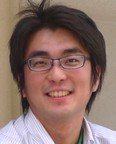- HOME
- Research
- Researcher's Profile
- Keisuke SAITO
Researcher's Profile

- Associate Professor
- Keisuke SAITO
- Theoretical Chemistry
- ksaito
 appchem.t.u-tokyo.ac.jp
appchem.t.u-tokyo.ac.jp
- Tel
- 03-5452-5056
- FAX
- 03-5452-5083
- URL
-
2023 Research Book (PDF:1.2MB)
Biography
| March 2008 | PhD, Graduate School of Pure and Applied Sciences, University of Tsukuba |
|---|---|
| April 2008 | Postdoctoral Fellow, Graduate School of Sciences, Osaka City University |
| January 2011 | Postdoctoral Fellow, Career-Path Promotion Unit for Young Life Scientists, Kyoto University |
| October 2012 | PRESTO resarcher, Japan Science and Technology Agency |
| October 2013 | Assistant Professor, Graduate School of Sciences, Osaka University |
| June 2014 | Assistant Professor, Graduate School of Engineering, the University of Tokyo (UTokyo) |
| October 2014 | Assistant Professor, RCAST, UTokyo |
| May 2015 | Lecturer, RCAST, UTokyo |
| November 2018 | Associate Professor, RCAST, UTokyo |
Research Interests
Photosynthesis is a process used by plants to make energy and oxygen from the sun light, water and carbon oxide. The molecular mechanism how plants generate oxygen is still unclear. The oxygen evolving reaction is catalyzed by a protein molecule. Therefore, a key to understand the mechanism of the oxygen evolving should be found in the molecular structure of the protein. We study the molecular mechanism of photosynthesis by analyzing protein structures based on theoretical physics and chemistry with computers.
As alternative and renewable energy sources, photosynthesis has attracted attention, e.g., “artificial photosynthesis” (mimicking the mechanism of natural photosynthesis) and “algaebiomass” (providing fuel by algae’s photosynthesis). To realize practical use of such photosynthetic energy sources, we need to understand the mechanism of photosynthetic process in proteins of natural living things.
We study the following issues:
- How do photosynthetic organisms efficiently harvest and use the sun light? How can we improve the efficiency?
- What is the mechanism of the water splitting and the oxygen evolving reaction in plants?
- Why are electrons, protons and energy transferred to the determined direction in proteins?

